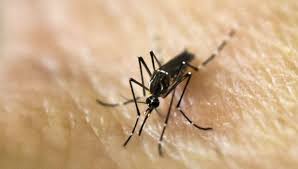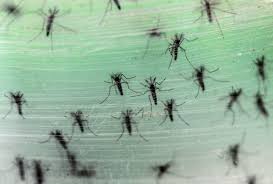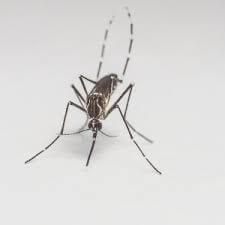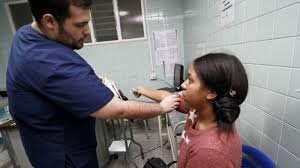Zika is already named as one of the most dangerous viruses to ever affect humans with pregnant women and their unborn fetuses suffering the most. Officials just reported recently that infected mosquitoes have already transmitted Zika in another area of South Florida. There are now 10,000 Zika cases are already confirmed in the United States. Experts are already starting to study the possibilities of a vaccine.

According to the researchers from La Jolla Institute for Allergy and Immunology and Rockefeller University, the Zika virus can damage the stem cells in our brain. These are known as neural progenitor cells that help replace the neurons that have been damaged. The cells also assist in memory and learning.
Zika and Adult Neurons
At first, it was perceived that neural progenitor cells were resistant to Zika as they became mature neurons in adults. Yet, studies show that Zika affects specific cells in adults, the same way the virus does in fetal cells. The researchers use fluorescent biomarkers, which show specific infected areas of the brain stem cells.
During the developmental stages of the fetus, the Zika infects the entire brain. In a study performed on adult mice, the virus only affected the neural progenitor cells. This shows that the adult brain cells are vulnerable to damage due to Zika infection as well.

The Threat
Experts need to perform more research to see if the damage done by Zika on adult neural progenitor cells affects behavior or has long term implications, biologically. According to Professor Sujan Shresta of the La Jolla Institute of Allergy and Immunology, the Zika virus enters the brain and damages it significantly. Zika is complex. When acquired as a fetus, it is devastating for the early development of the brain. In adults, majority rarely show obvious symptoms. The undetectable symptoms tell us that the Zika has subtle effects of the adult brain.
What Happens to Neural Progenitors
During early gestation, before the brain reaches complexity and specialization, they are made of neural progenitor cells. These are the stem cells that replenish the neurons in your brain throughout your entire life. Healthy individuals eventually have fully developed neurons from their progenitor cells. Experts say that at some point, adult neurons become Zika resistant. This explains why adults are less vulnerable to the virus.
Despite these findings, there is evidence that suggests that since Zika aims in infecting the neural progenitor cells, the virus leads to decreased brain cell volume and deteriorated neural progenitor cells. This is similar to what happens during microcephaly, which happens in fetuses.
The mature adult brains keep certain niches for the neural progenitor cells, which are readily affected by the Zika virus. In adult mice, the cells exist in the subgranular zone (hippocampus) and the subventricular zone (anterior forebrain). These areas are important for memory and learning.

Experts say that if the Zika virus can infect the fetal neural progenitor cells easily, then it would not have any problems in infecting the same cells in a mature adult. In adults, the virus does not affect the entire brain. The anterior forebrain and the hippocampus are readily affected by the Zika.
Surpassing the Boundaries of Fetal Brain Zika Infection
Experts discovered the correlation of reduced neuron generation and cell death with Zika. Newly generated neurons are important for neuroplasticity, which allows your brain to change and adjust over time. If there is a deficiency in neuroplasticity, neuropathological conditions (Alzheimer’s and depression) and decline in cognition develop. Healthy adults are able to fire a good immune response to Zika infection to prevent it from infecting in some cases. But, people with compromised immune systems, may be more vulnerable to the virus. According to some experts, there could be a risk of depression and an impact on long term memory.
Guillain-Barré syndrome is also linked to Zika. It is a rare ailment that affects the nervous system. It leads to weakness of muscles and paralysis. This syndrome only appears after the Zika infection has already subsided. Experts say that this may be caused by the infection of the adult neural progenitor cells. This exposure is perceived to have long term effects on the brain.
Zika Effects on Fetal Brains
Zika has reached Salvador, Brazil. One pregnant mother named Ana Gabriela do Prado went to her usual prenatal exam. During the exam, Dr. Paschoal told her that her baby’s head has a smaller than normal size. Ana Gabriela was infected with the Zika virus while she was pregnant. She eventually gave birth to Maria Luiza. When Maria Luiza reached three months of age, she already had lesions on her brain. Her brain acquired damage from the virus. This was manifested by stiffer than normal muscles. Not being able to talk or walk were just a couple of the devastating complications from the Zika infection.
Zika literally eats away at the brain of the developing fetus. It destroys and shrinks the lobe of the brain that control basic functions such as vision. The virus even prevents the areas of the brain from forming and developing. In Brazil, the babies who have been infected severely, have all died hours after birth or before they were born. It is not known how long the surviving babies will live or if their condition will be corrected in the coming years. Congenital Zika Syndrome is the term used for the more severe condition that babies have than what is described in cases of microcephaly. This is when fluid takes up the space where there is no brain tissue at all.
Maria Luiza was just one of at least 1,000 infants with birth defects born since October. They were all suspected to have been infected by the Zika virus while they were still in their mothers’ wombs. Many of these infants may never walk or talk, see well, or may even acquire epilepsy. Most of them may require long-term care.

Telling infected mothers about what will happen to their babies makes every doctor’s job very difficult. Some mothers become excited sometimes because they find out that the heads of their babies have grown more. Doctors often break their hearts by telling them that the increase in size is not a sign of healing or improvement. It is just the accumulation of fluid, which should be drained.
Since the birth of Maria Luiza, her mother has decided not to have any more children. She decided to just concentrate on taking care of Maria Luiza, who has a malformed corpus callosum and impaired eyesight.
Zika’s Long Term Effects
Zika has been perceived to cause long term damage to one’s memory, which exhibits the effects similar to Alzheimer’s disease. For the longest time, scientists had seen the Zika as a virus that only damages developing fetuses. They did not believe that the virus could ever pose a serious crisis for adults. A new study shows that Zika can also infect an adult’s brain cells. This causes long term memory damage.
It has been shown that Zika can reside in the brains of adults and wreak havoc in there. But because it is such a complicated disease, adults do not show obvious symptoms. According to studies, Zika also targets the undeveloped cells in the brains of adults—those which are important for memory and learning. In the long run, the death of these stem cells could lead to the shrinkage of the brain. This leads to mental deterioration, similar to Alzheimer’s disease. Fluorescent biomarkers have been used to indicate if the adult brain cells have been invaded by the Zika virus.
Health officials should also monitor the Zika infections in all populations, not just those composed of pregnant women. It is true that healthy adults can resist the Zika virus, but those with weak immunity could be very vulnerable to the infection. The most subtle cases involve the theoretical possibility of a higher risk of depression or long term memory defects. Present research is now raising the unsettling possibility of long term mental devastation in adults infected with Zika.

More than Microcephaly
The public has been heartbroken by photographs of children struck by microcephaly. Zika has definitely left a trail of children with small heads and neurological defects. Northeastern Brazil is known as the epicenter of Zika. A journal about the infection shows that the devastation to the fetal brain may be more diverse and extensive than has been previously established.
There have been case studies about abnormalities in fetuses that extend beyond the realms of microcephaly. The images published in the journal called Radiology shown the six neurological defects that the researchers found in almost all of the babies involved in their study. This is a significant piece of literature because for the longest time, the diagnosis of microcephaly is based on the infant’s head circumference, which is smaller than those of the normal infants. Some diagnosed infants continue to develop in a normal way. They only have minimal defects. This particular study confirms that the infants who suffered from Zika and have microcephaly may have more difficulty or may be more affected.
According to Professor of Radiology, Deborah Levine from Harvard Medical School, Zika is indeed a very destructive disease. Evidence shows that in this infection, the brain just doesn’t show malformation. Most of the children involved in the research from June 2015 – May 2016 had head circumference that went below the fifth percentile. They were presumed or confirmed to have been infected by the Zika virus while they were still developing in the womb. Many Zika babies do not have abnormally small heads. Many of them have skulls with collapsed shape.
The unusual skull shapes of these Zika babies may be due to the small brains, with fluid buildup. Because of the fluid buildup, the head looks larger and then it collapses or decompresses. These infants also have folded skin on their heads. This is because the skin continues to grow, despite the regression of the brain and the shrinking of the head.

Ventriculomegaly is also one of the defects suffered by Zika babies. In this condition, the structures of the brain become too large because they are fluid filled. Some patients with this condition are untreated. In other cases, interventions such as surgery are done to prevent long term, serious neurological damage.
A large number of the babies during the study had calcium deposits in their tissue or intracranial calcifications. These calcifications impair the functioning of the brain. The calcified regions in Zika babies are denser. The calcifications are also situated near the brain’s gray matter, white matter juncture, instead of what’s typical, which is outside the brain. It is hypothesized that this happens because the virus attacks the neurons of the brain.
There were also infants who had abnormal corpus callosum. Corpus callosum is the nerve fiber tract that connects the brain’s two hemispheres.
Presently, the health officials in the United States are monitoring more than 400 pregnant women infected with Zika. They have estimated that their children could possibly require at least 10 Million USD for their special care their entire lives. The Zika virus now continues to spread all of the U.S. It is possible that it could create the first ever large outbreak of dangerous birth defects since 1954’s rubella outbreak. The rubella outbreak killed 21,000 and left 20,000 with several issues such as microcephaly, heart damage, and deafness.
Adult brains are not safe from the Zika virus. It may discretely affect the brains of adults, but the long-term effects of the virus can lead to conditions such as depression and Guillain-Barré syndrome. The infants who survive the virus also have to undergo special care for the rest of their lives.

The damages that the Zika virus brings to the table are devastating not only to the patients themselves, but also to the loved ones. Those who know and understand the virus are already fearful of having children. Zika is a real threat and adult mosquitoes can pass the Zika virus onto their offspring. The fact that the number of cases are already increasing worldwide is enough to create a global panic. Make sure you always coordinate with your doctor so that you and your loved ones can be safe from Zika.